In Brief
Name Whitburgh House
What Old walled garden on a country estate
Where Near Edinburgh
Size One acre
Climate Temperate, cool summers
Soil Sandy loam
Hardiness rating USDA 8a
Contemporary sculpture, strategically placed around Whitburgh House, is the first hint this is not an average country house garden. Indeed the main planted area is a good 150m walk from the house, in the old walled kitchen garden. Just before you enter, there is another hint you are in for surprises – several galvanised steel troughs are planted up with Darmera peltata, the magnificent, large, round leaves of which are normally only seen around ponds. The familiar in an unfamiliar place gives a jolt to the sense of expectation.
Owner Elizabeth Salvesen is a passionate innovator in the garden, and works in close collaboration with head gardener Vincent Dudley. “The garden began to take shape in 1998,” says Vincent. “In 2000, after some construction, one half was completely redesigned. We then started the new planting style in 2005 to 2006, which is about when we first started going on garden tours. The light-bulb moment for me was when we went to the Weihenstephan trial garden near Munich, with its linear beds with fantastic colour combinations that you see at different angles as you walk along, as well as the research garden at Hermannshof. There it was the way in which they managed the garden that interested me, with different levels of maintenance for different areas.”
That warm, late-summer light may bring out the best in this garden but it’s the quality of planting that makes it stand out. It’s lucky in that like much of Scotland it benefits from a climate that is kind to a wide range of planting. You could also argue it benefits from Scotland’s cultural climate, which is one that has always been open to new ideas. Both are intrinsically entwined in this lively, forward-looking and unexpected gem of a garden.
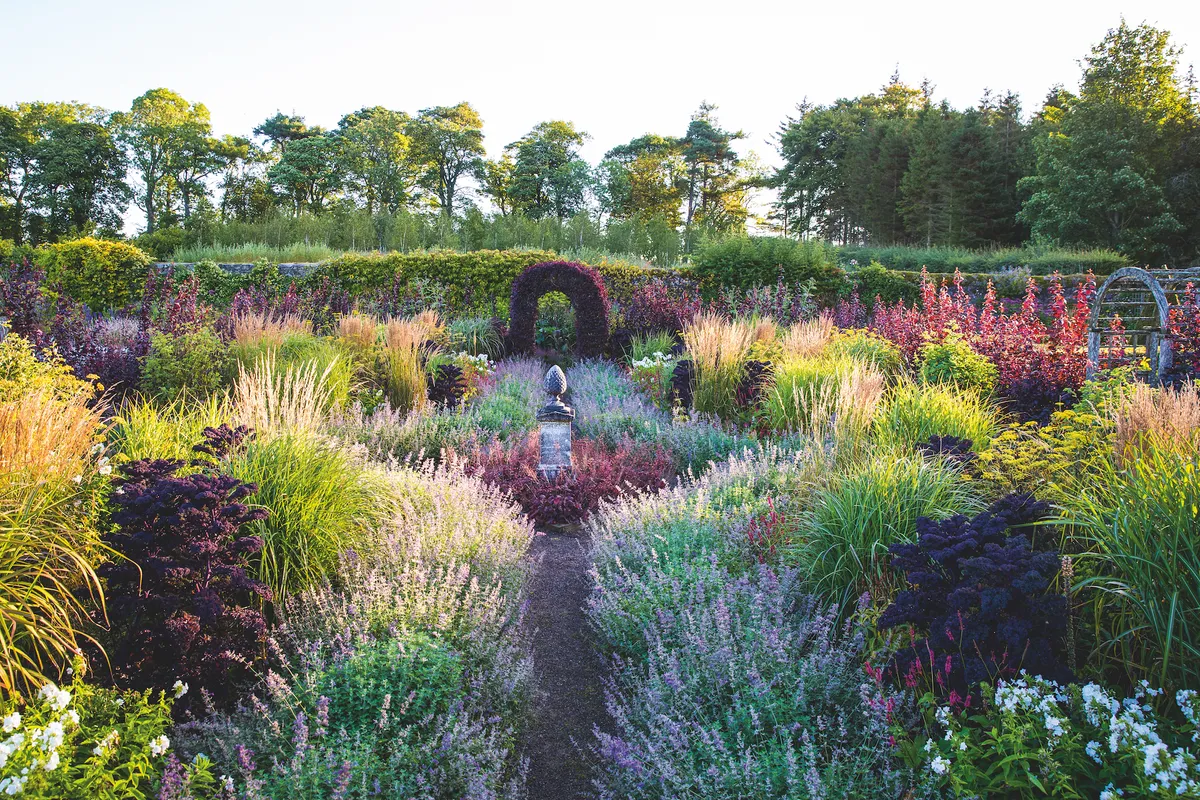
The red foliage of the curly dale, Brassica oleracea 'Redbor' and Heuchera villosa 'Palace Purple' around the stone pineapple pick up the tones of the Prunus cerasifera 'Pissardii' arch and hedge. Nepeta x faassenii lining the path provides a fainter echo still.
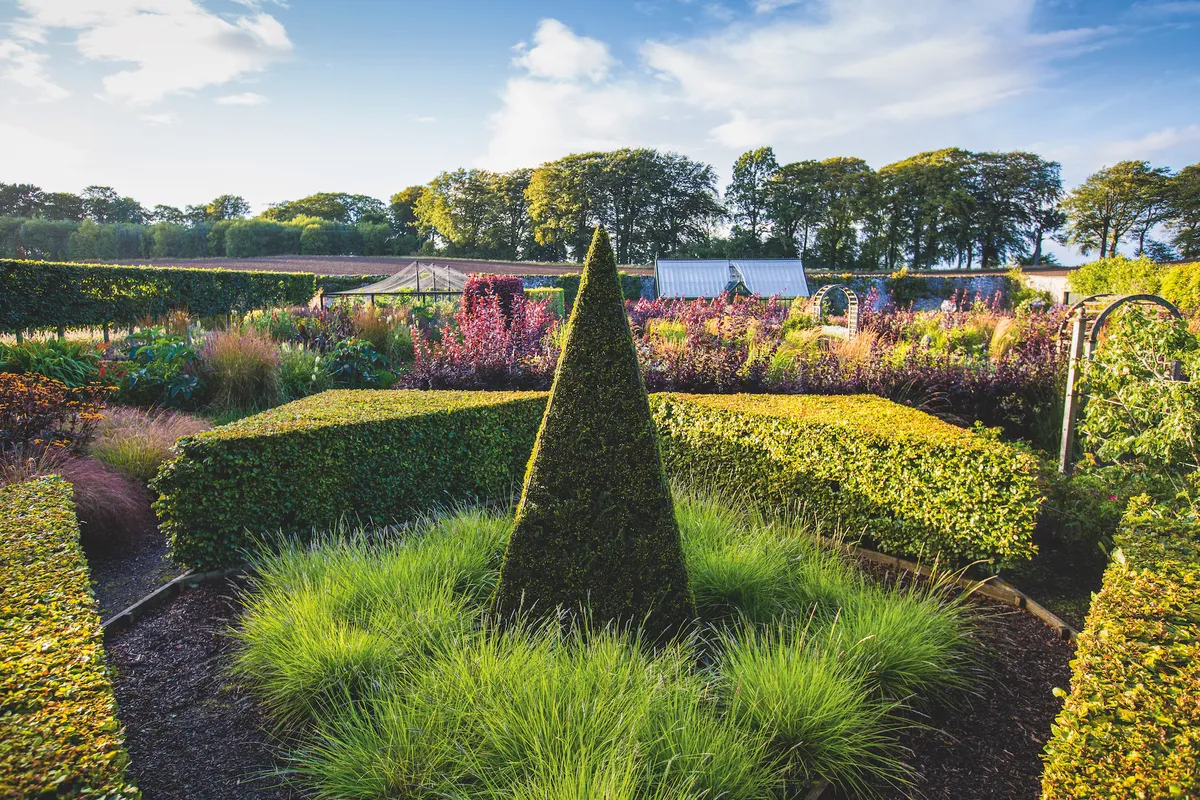
The sharp lines of the yew pyramid and beech hedging are softened by a ground cover of the grass Sesleria autumnalis. Although this is a grass that spreads, it does so at a usefully slow and predictable pace It's also tolerant of poor soils and so able to cope with some root competition.
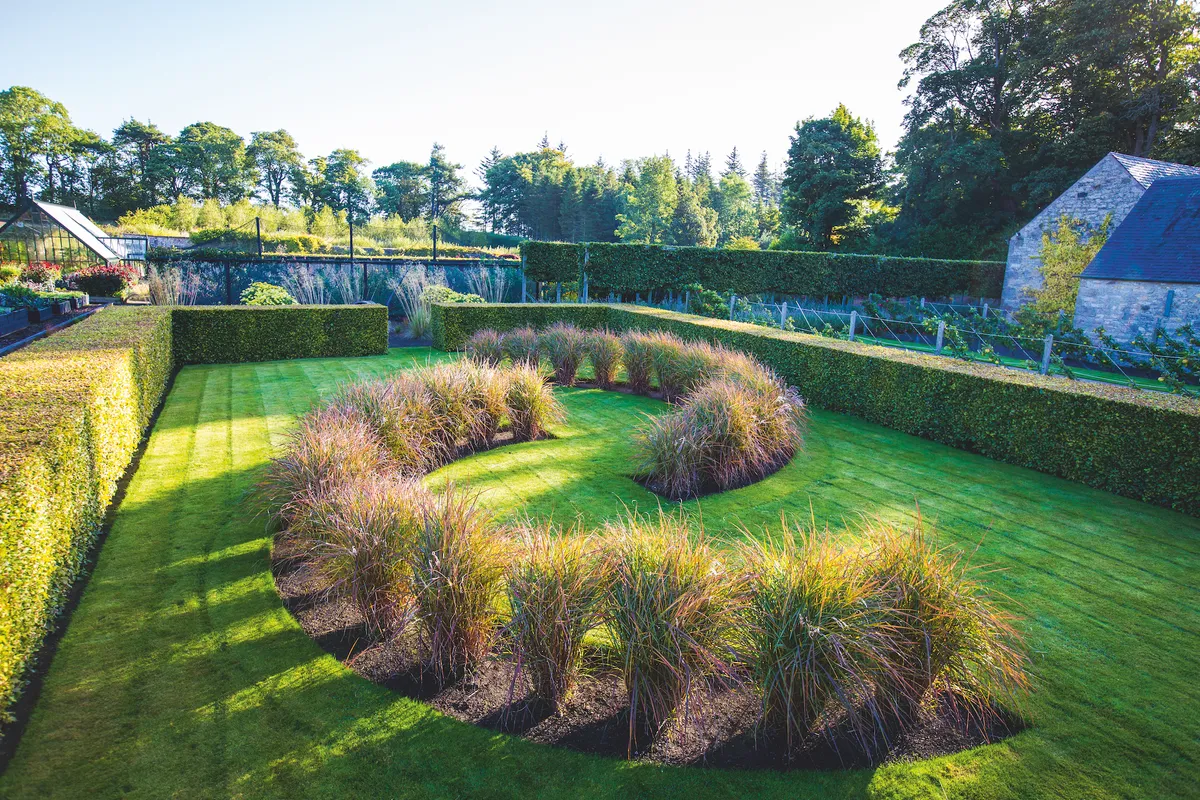
Two semi-circles of Miscanthus sinensis 'Flamingo' create an unexpected and highly innovative formal feature that contrasts beautifully with the neatly cut beech hedging. Over time these grass clumps will merge to form a solid curve and the pinkish foliage turns an orange-red in autumn.
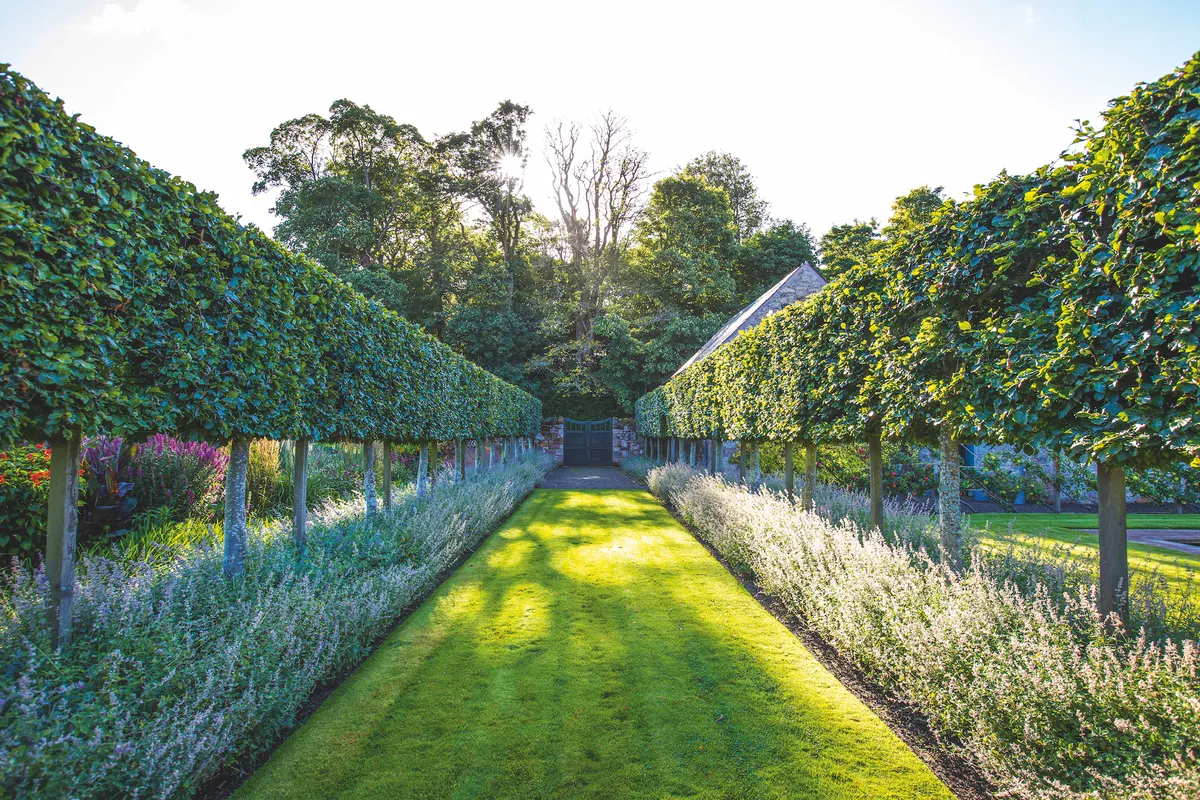
As you enter the garden through the gateway, two lines of pleached beech (rather than the more usual lime) lead your gaze into the garden. These hedges on stilts also offer tantalising glimpses of the vibrant planting beyond. They are underplanted with cool, blue-grey Nepeta 'Six Hills Giant'.

Some of the most innovative plant sculptures are the result of using left-over plants, as was the case with the famous hedging curtains at Piet Oudolf's own garden Hummelo, the Netherlands. These curved waves were created from redundant box plants that Vincent used for some experimental clipping.
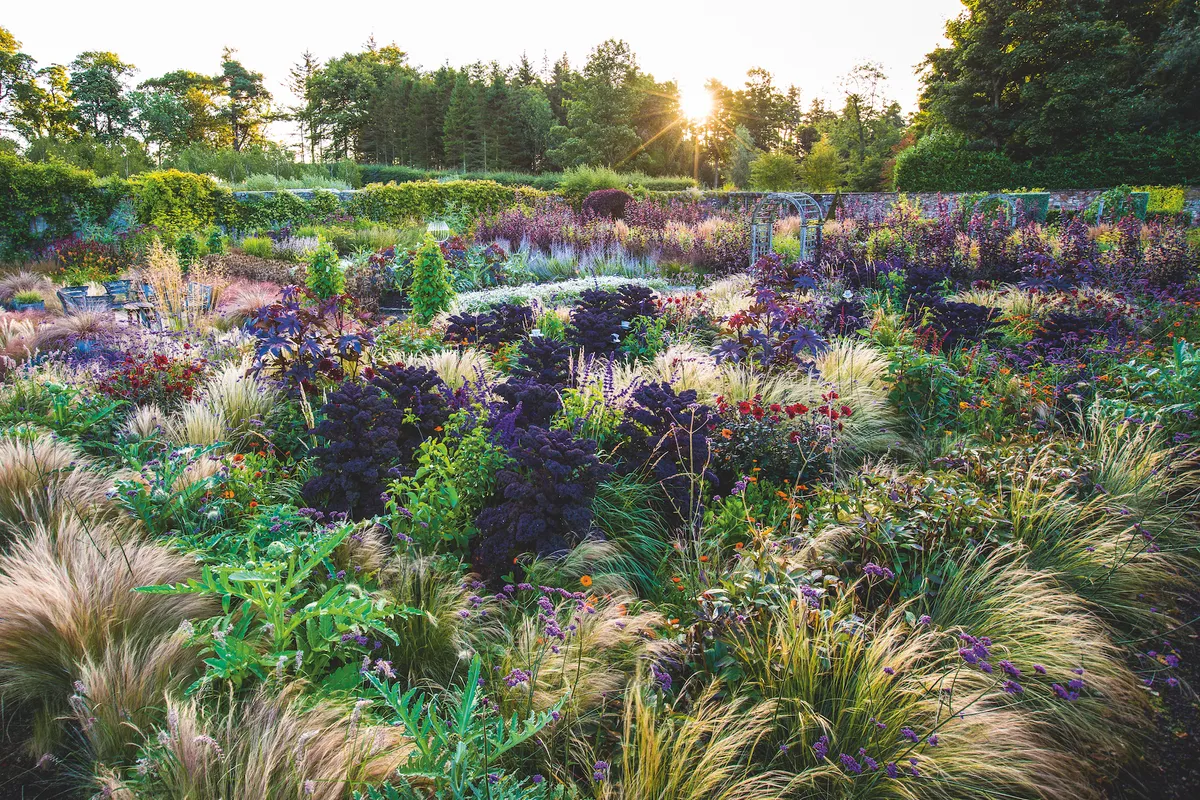
This large block of planting within the walled garden is where Elizabeth and Vincent try out new ideas. The basic structure remains the same from year to year, the short-lived by self seeding grass Stipa tenuissima and the Brassica oleracea 'Redbor', a red-leaved kale, has to be started from seed and planted out every year.
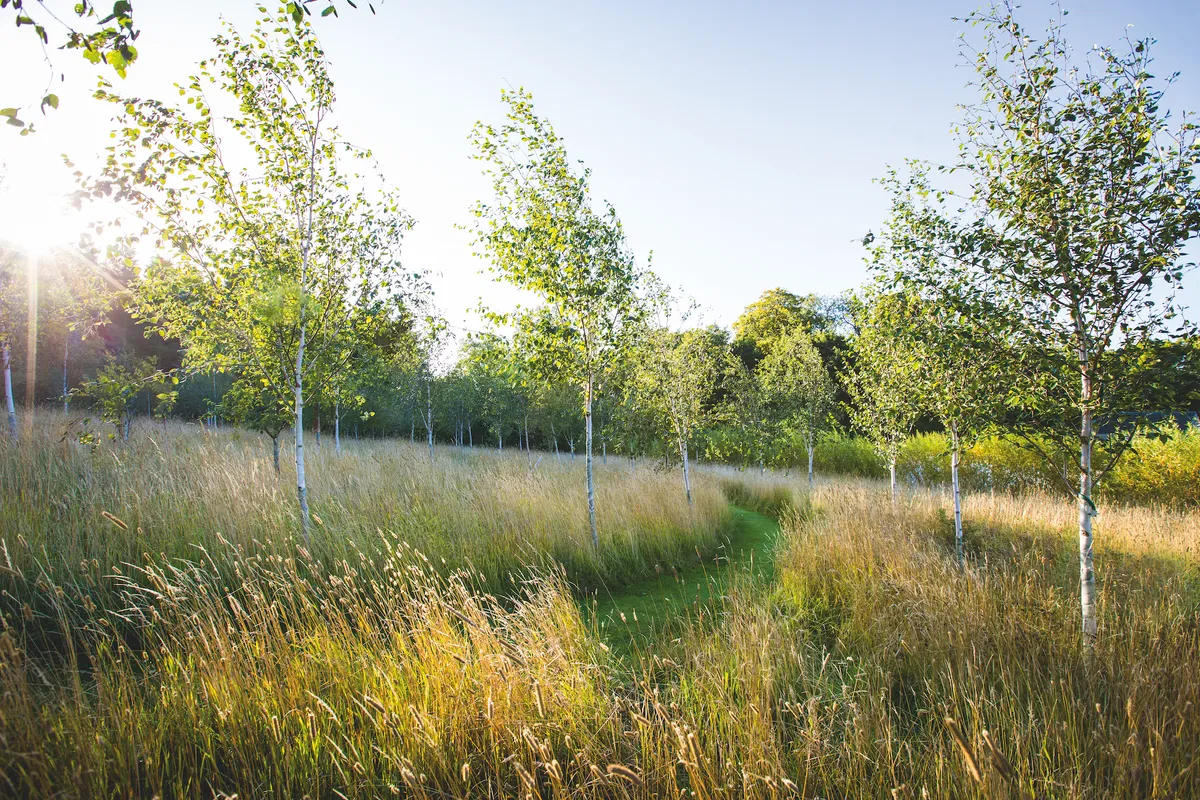
A double spiral of mown paths has been cut through a rough grass meadow just outside the walled garden. Five different cultivars of birch line the winding path providing both continuity and also subtle change.

Grasses, including Anemanthele lessoniana, Carex buchananii, Molinia caerulea and Stipa gigantea surround a seating area in the walled garden.

Three penguins made from old motorcycle petrol tanks by the Scottish sculptor Helen Denerley, look over a pool – a restful space in a complex garden. Apple cordons of old Scottish cultivars line each side.
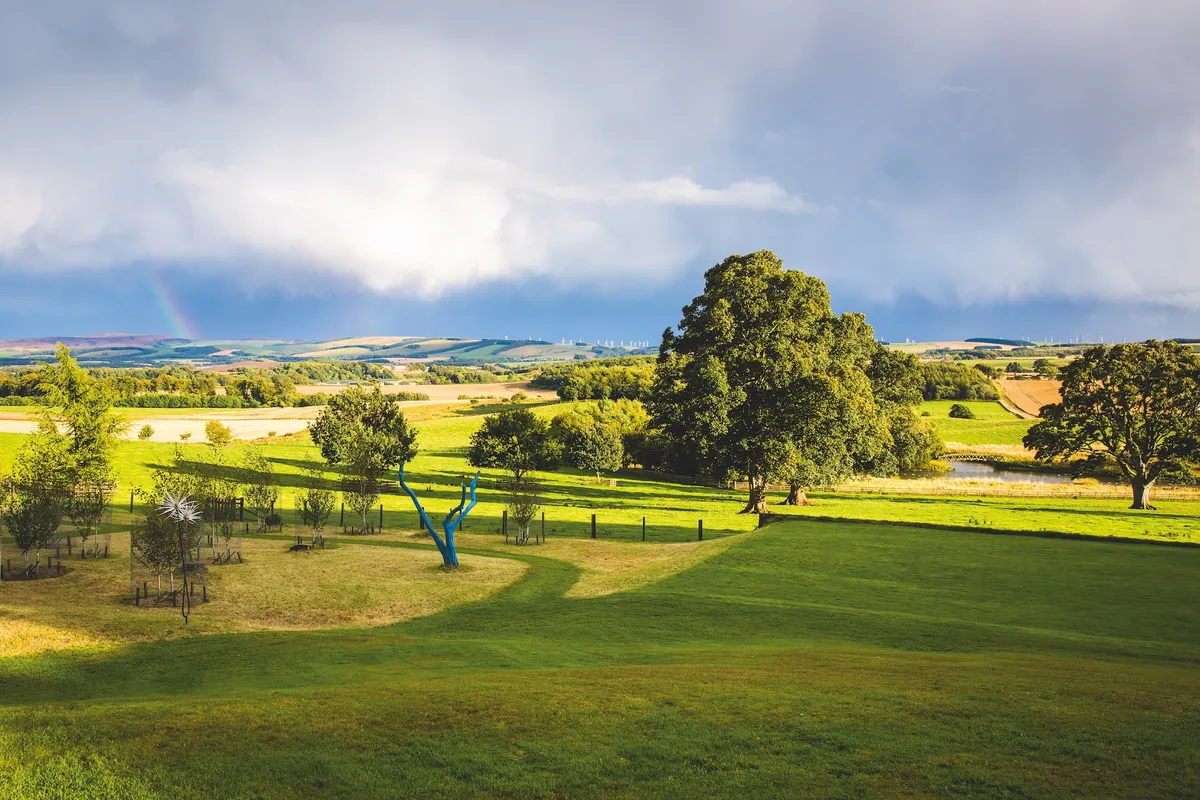
Looking south from the house, the view out over the hills is interrupted by the skeleton of a dead tree that Elizabeth has painted blue. To its left is a piece by artist and glassmaker Neil Wilkin titled Seed Head.
• Whitburgh House is open on selected dates as part of Scotland's Garden Scheme.
Words: Noel Kingsbury
Photographs: Claire Takacs